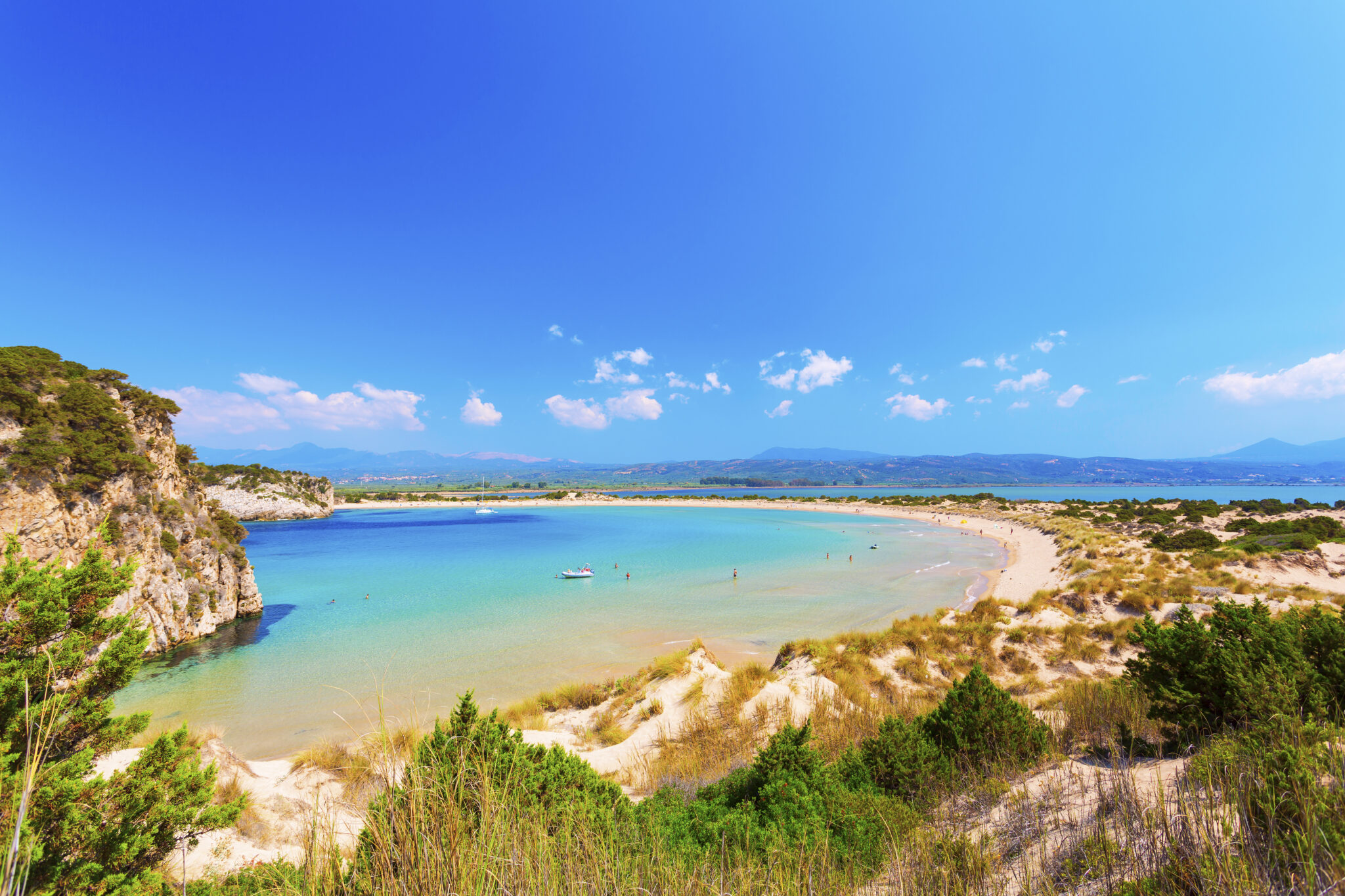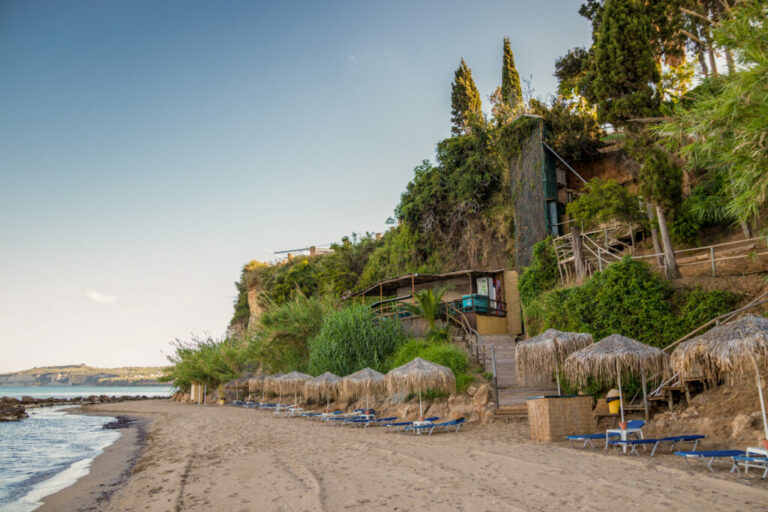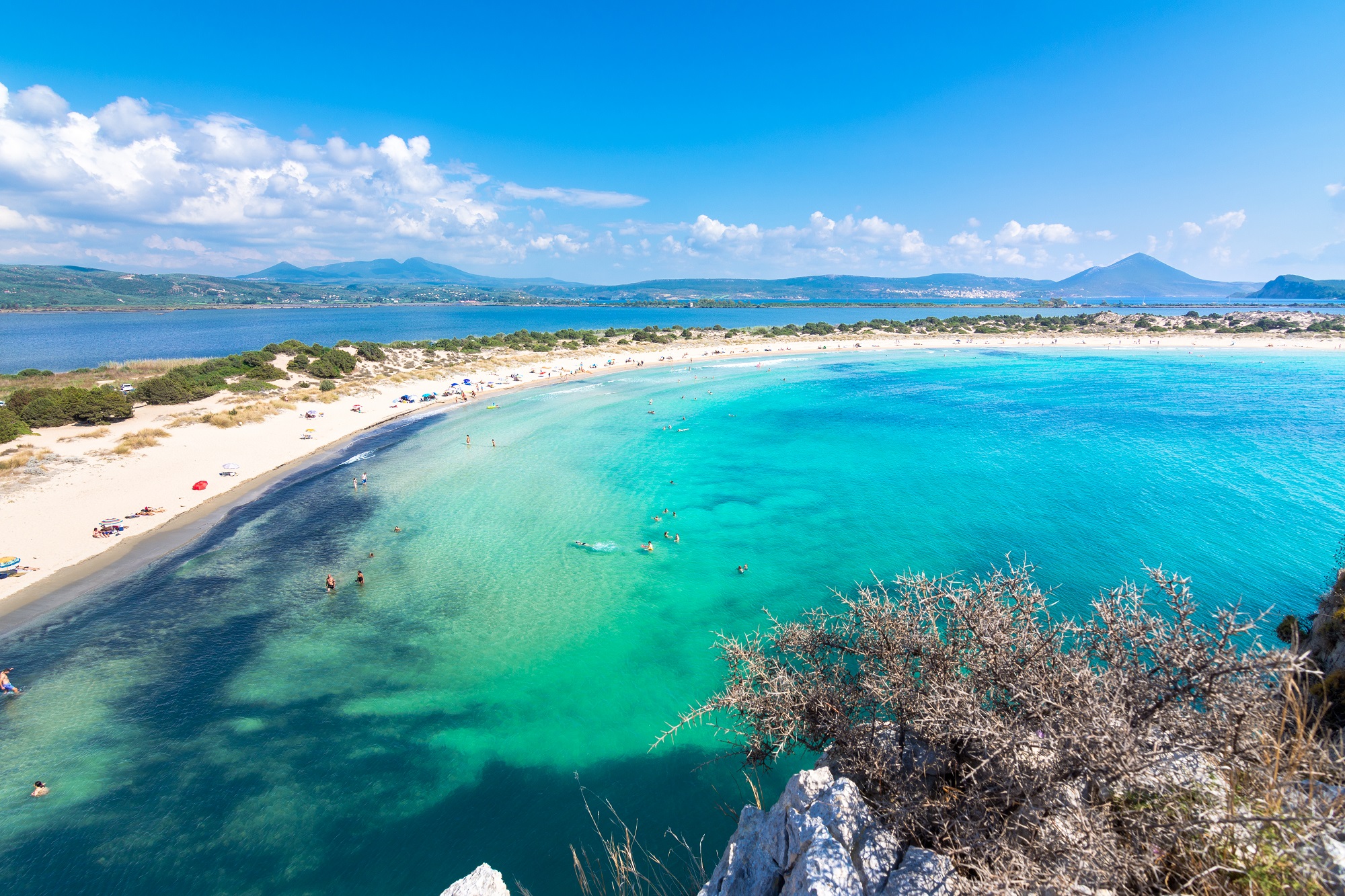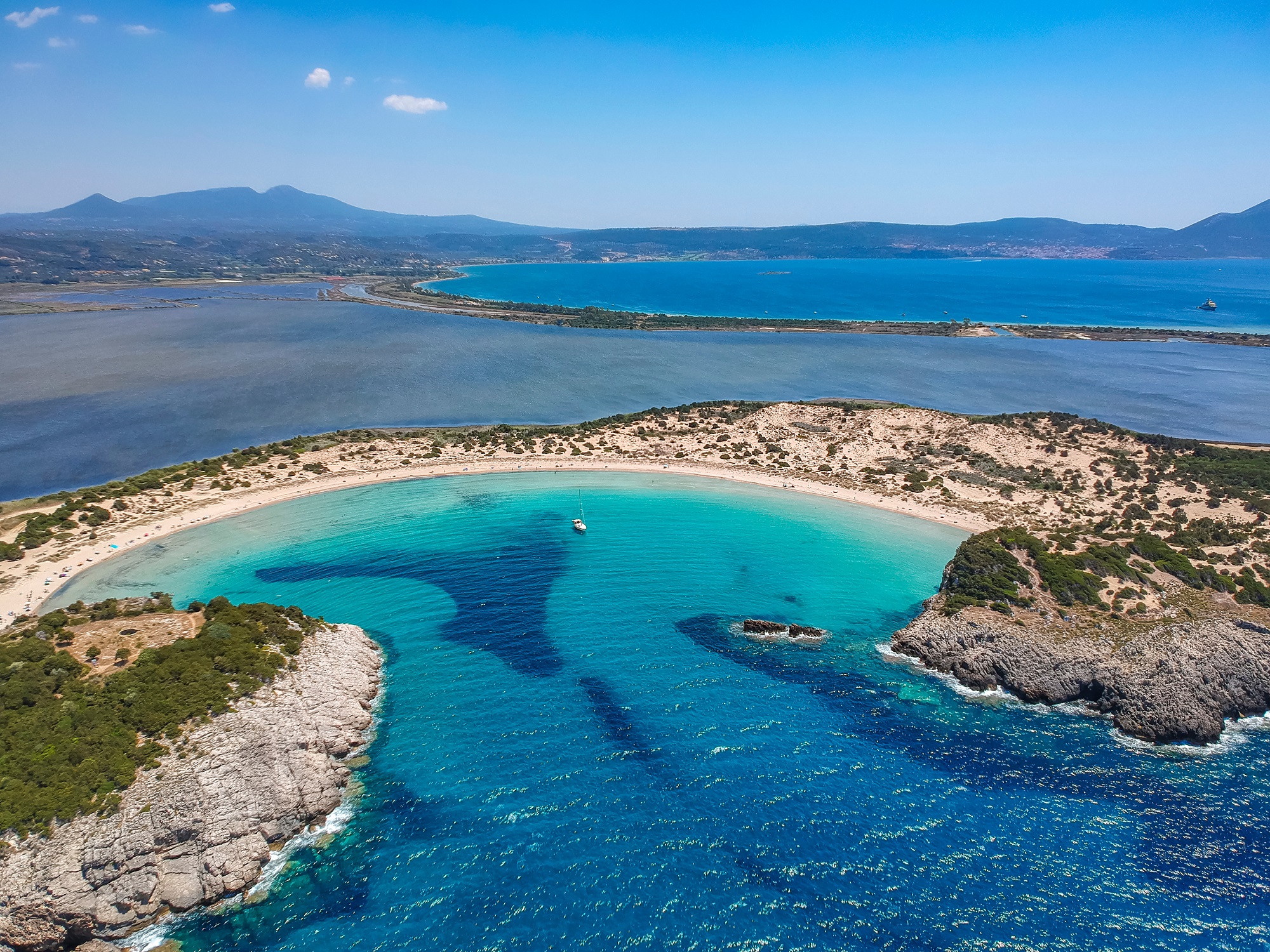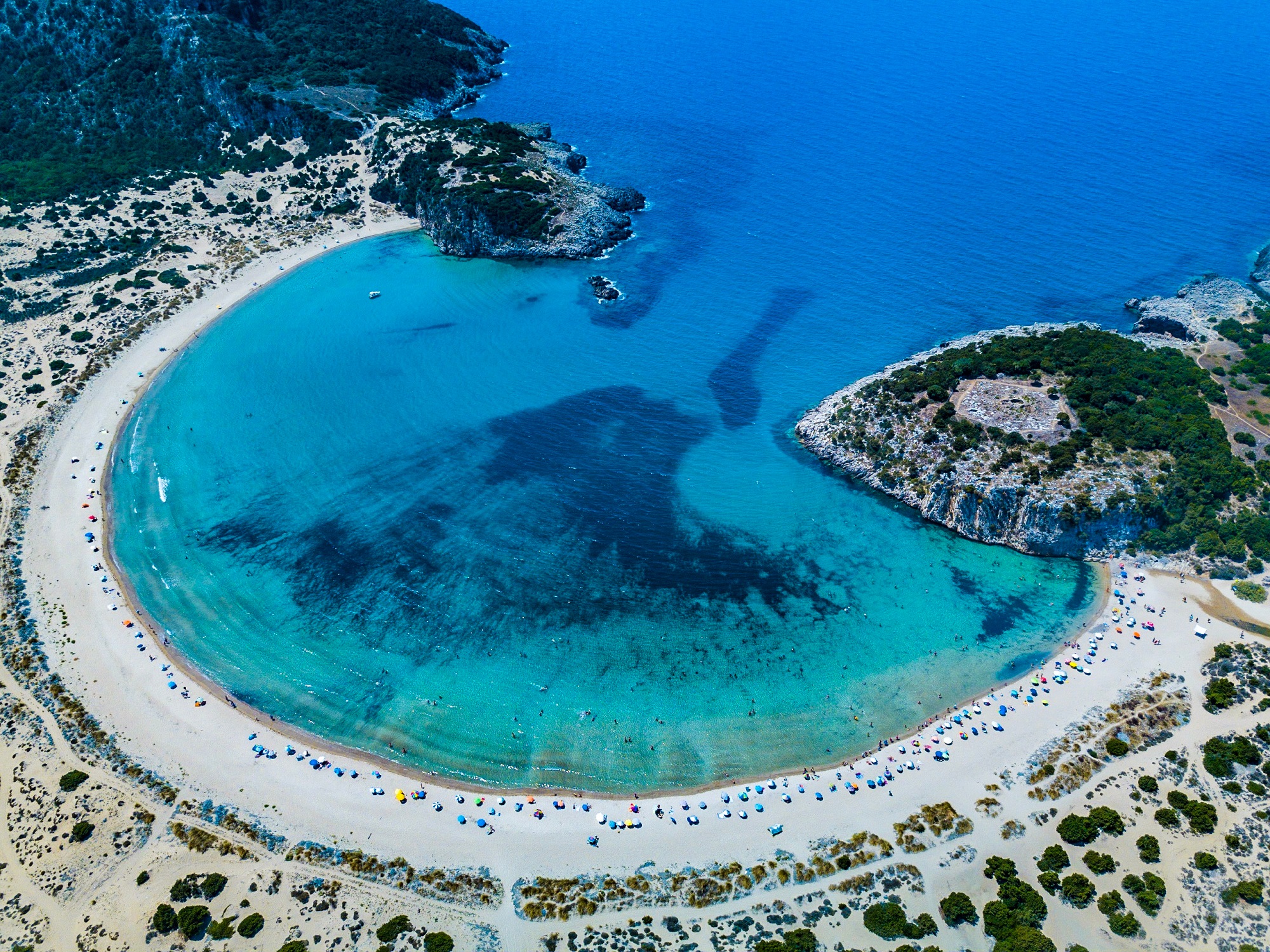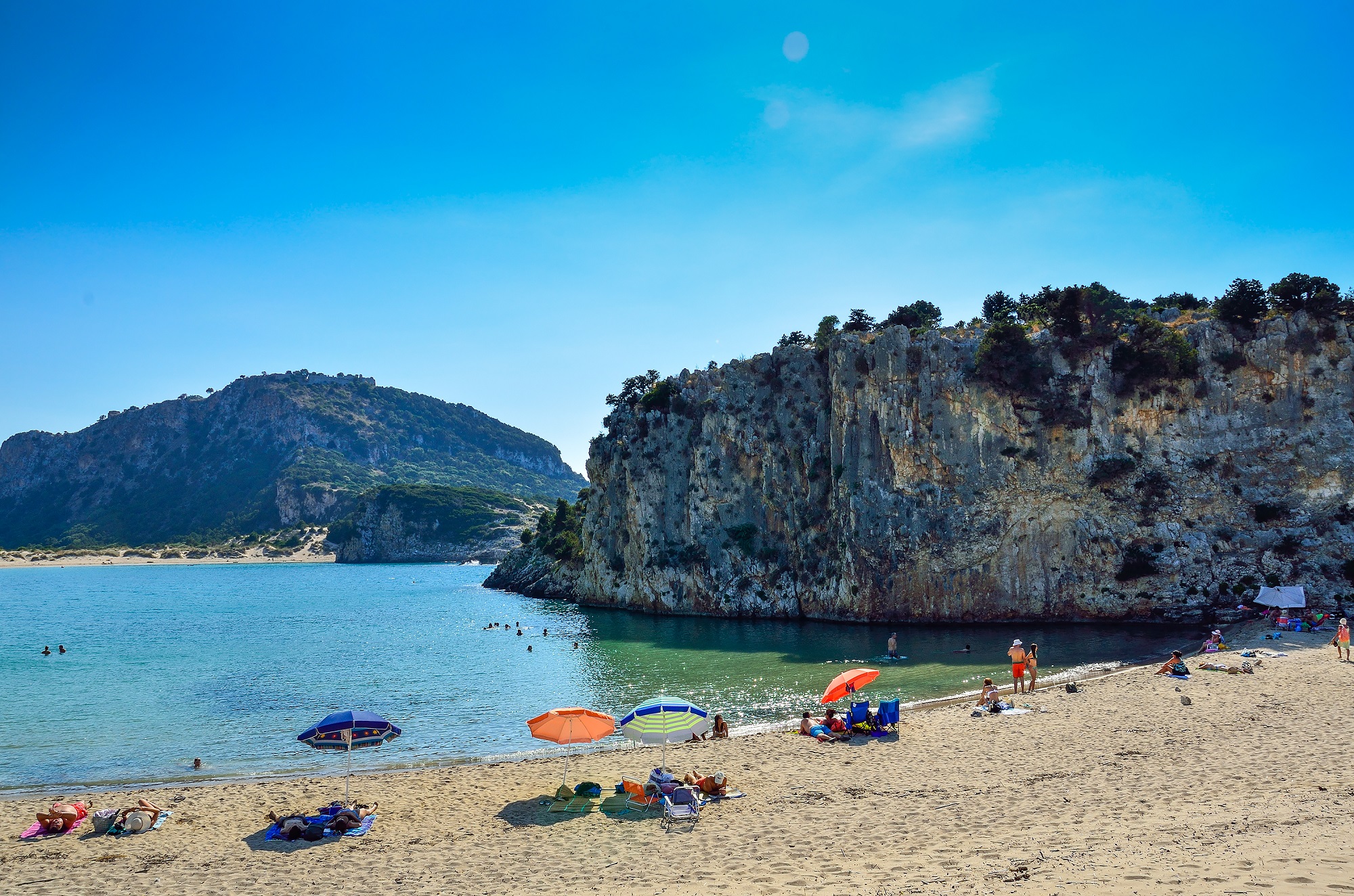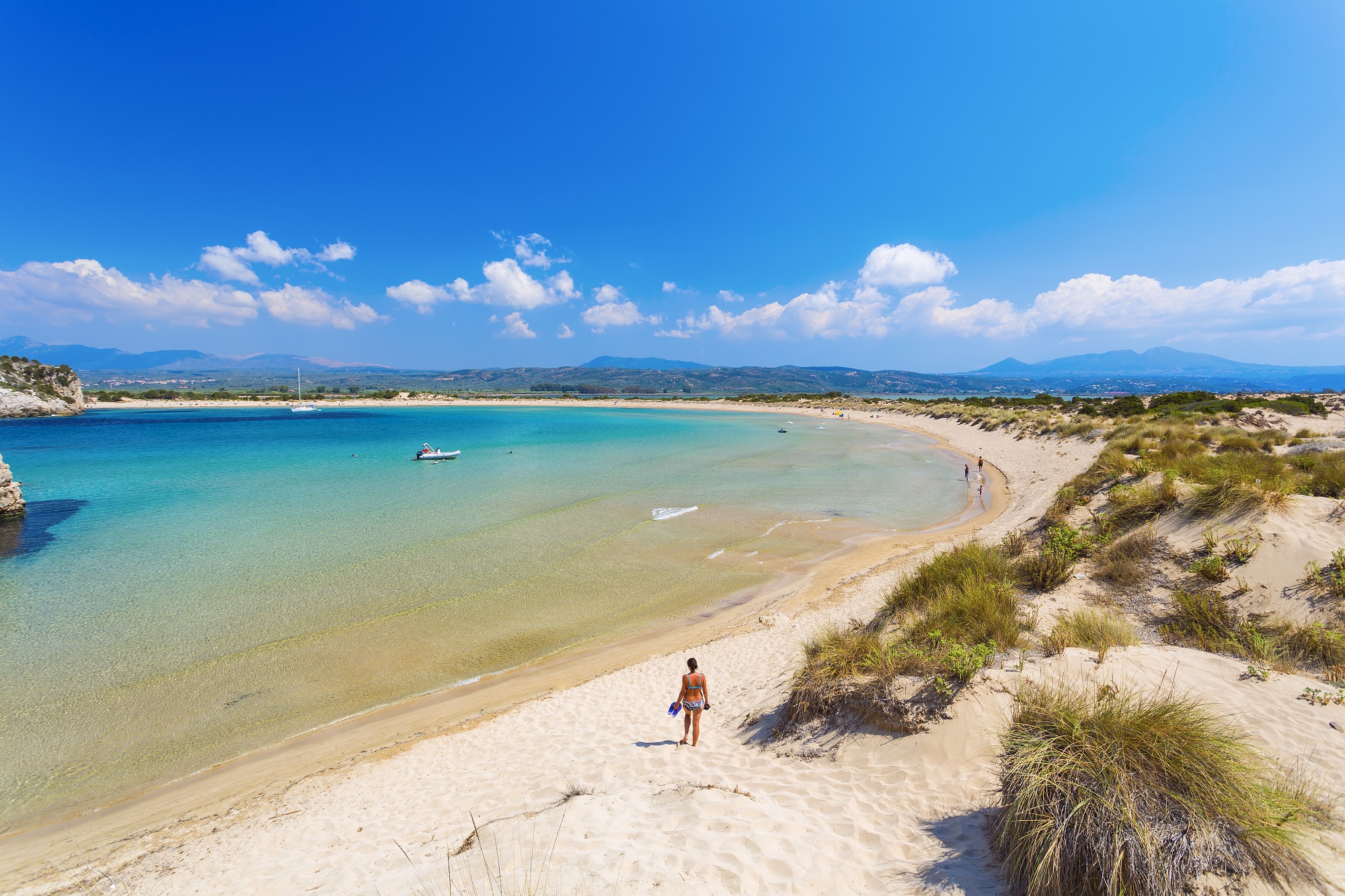Once amongst the Peloponnese’s hidden gems, Voidokilia beach has developed into a major international attraction in recent years, the fame of its unique beauty propagated by the Instagram generation. Scores of visitors from Greece and abroad have established this beach, in the Peloponnese’s southwest, as a key summer attraction.
This horseshoe-shaped beach, facing the Ionian Sea, is endowed with one-of-a-kind natural beauty, as highlighted by its EU Natura 2000 network listing, offering the location environmental protection.
A strip of picturesque dunes separates Voidokilia beach from the adjoining Gialova lagoon. The beach is nowadays regarded as one of the Mediterranean region’s most impressive coastal spots. This beach is generally perceived as a laid-back exotic paradise whose adjacent wetlands, amongst Europe’s most important, are a bonus.
A place shrouded in myth
Besides its natural beauty, Voidokilia beach is shrouded in myth as a result of its ancient past, signs of which remain apparent.
A beach referred to as Voufrada in Homer’s “Odyssey” is believed to be a reference to modern-day Voidokilia beach. Voufrada, in Homer’s epic poem, is where Telemachus, arriving form Ithaca, moored his boat to ask Nestor, King of Pylos, about the fate of the missing Odysseus. The name Vouvota has been saved by a latter inscription, while the beach’s modern-era Voidokilia name, meaning belly of an ox, could have been inspired by its shape.
A prehistoric settlement has been discovered at a hill on the northern side of the beach. A prominent figure was buried at this location during the Mycenaean era. It is speculated that this person may have been Thrasymedes, Nestor’s son, although this cannot be proven. The southern side of the beach is home to Nestor’s Cave, where, according to ancient mythology, Hermes hid cattle he had stolen from Apollo.
The ruins of Palaikastro, the castle built by the Frankish rulers of the Principality of Achaea when they occupied the region in 1204, may be seen directly above the cave. As it was accessible only from the beach, the castle was considered impregnable for the military standards of the medieval period. Even if you happen to be in the area at a time when preservation work is in progress at the castle’s ruins, it is worth making the ascent for the location’s view of Voidokilia and the nearby Costa Navarino luxury resort.
Voidokilia beach profile
Despite attracting masses in August as well as during weekends in July, Voidokilia beach remains a non-serviced beach without any tourism infrastructure as a result of its Natura 2000 network classification. Some visitors, ignorant of the environmental protection required by this classification, complain of a disregarded attraction.
Voidokilia beach’s Natura 2000 network classification keeps the location protected from any form of tourism-sector development. Visitors, then, must be prepared to bring their own beach towels or mats, umbrellas, as well as food, water, high-protection sunscreen, and, if needed, a change of clothes and shoes. These needs especially apply if visitors intend to spend some time in the area to visit Nestor’s Cave or the Gialova lagoon.
Voidokilia beach is surrounded by low vegetation, while its waters, not cold, offer brilliant shades of blue and green, making them ideal for diving with masks or goggles. Overall, this beach is picturesque and serene, its fine sand giving it an exotic look.
How to get there
There are two ways of getting to Voidokilia beach. Either way you choose will require a vehicle. Pylos, approximately 10 km south of the beach, serves as the starting point for both alternatives.
The easiest way to get to Voidokilia beach is to drive onto the regional highway, from Pylos, and head in the direction of Gargalianous. Turn left when you see the road sign for Petrohori. Voidokilia beach is 800 metres away. The road is narrow at certain sections but safe. A parking area is available next to the beach. Keep in mind that the parking facility could be full during August and on weekends in July if you arrive at a time well into the day.
The second route from Pylos leads to Gialova, where you turn left towards Divari beach. Carry on towards the sea and park your vehicle at the beach bar. From this point, you may walk either towards the lagoon or uphill towards Palaikastro, from where a trail leads down to Voidokilia beach.
Read also:
Dive into the “Blue Lake” of the Peloponnese: Near Kalamata lies a hidden, wild paradise
Long weekend in Koroni, Greece: Medieval atmosphere, magical sunsets
Vrontos waterfall: Cascading secret of Arcadia mountain range



